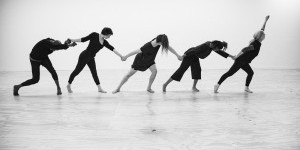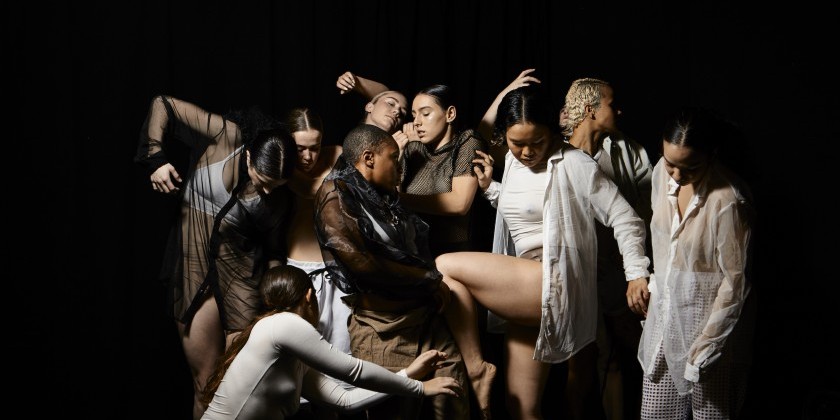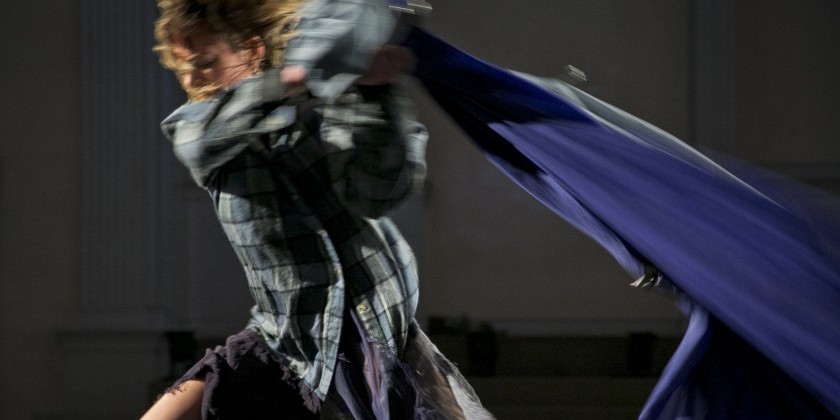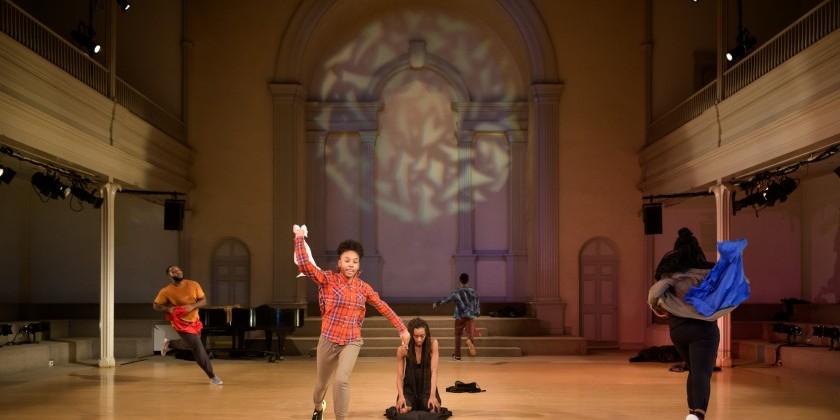The Dance Enthusiast Asks Jennifer Monson
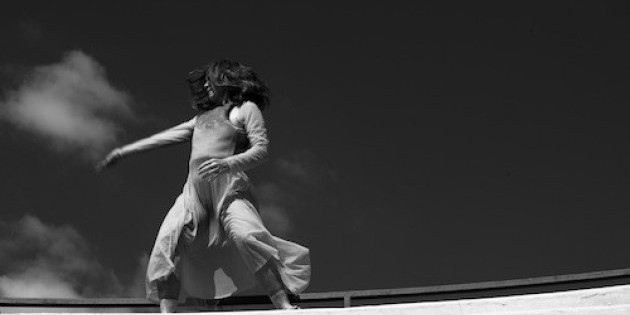
Returning to the Theater
February 19, 2013
Choreographer Jennifer Monson has been making work since 1983, but for a little over a decade she has taken her work outside to untraditional places. No she wasn’t performing in art galleries or doing flash mobs. Instead, several of her works, including the eight-year touring project BIRD BRAIN, took Monson to places such as North Carolina beaches and the Arctic to witness and to respond to migrations of grey whales, ospreys and other animals. Monson eagerly anticipated her return to the theater space, and incorporated her outdoor experiences in a video installation, digital archive and in her indoor solo Live Dancing Archive. The work (approaching its second weekend run at The Kitchen), “explores the dancing body in conjunction with the moving image of video and other media as an archive of place, experience and systems.”
For ticket information to Live Dancing Archive, click here.
TDE: What role did the environment play while you were growing up in Southern California?
Jennifer Monson: My family has a place just north of Joshua Tree (a National Park in southeastern California), and we would go there for holidays. It’s an incredibly unique landscape. It has a mix of both the low desert and mountains. There are piles of flesh colored rocks all over, and there are no rails or anything so you can just wander. It’s also a fragile ecosystem so I grew up with a sense of protection of that landscape.
TDE: You have many years of experience improvising as a performer. What was your early improvisational experience like?
JM: I was incredibly fortunate to grow up in California in the 1960s. At that time, there was a progressive education system, and I had a fantastic dance teacher at my elementary school. I also took creative movement so I was already improvising from the time I was five-years-old. In addition, experiences in nature such as finding rocks were and still are incredibly suppository. I’ve always been improvising, first in a creative movement approach then it was later that I experienced it in dance styles such as ballet and modern.
.jpg) |
| Production images of Live Dancing Archive; Photo Valerie Oliveiro, Krannert Center for the Performing Arts at University of Illinois, Urbana-Champaign |
TDE: Prior to Live Dancing Archive, your work has largely been performed and explored outdoors, including Bird Brain. When performing the different stages of the project was there a place or animal you personally connected with more so than others?
JM: It’s hard to say because each of the experiences was very different. Since I am from the west coast, I was really drawn to Baja California and parts of Vancouver Island. In the Osprey Migration project [part of Bird Brain], we went to the southern coast of the United States, including the beaches of North and South Carolinas and Florida, which was interesting because I had never been to that region. It was such a different physical and cultural experience to explore the swamp-like landscape in the Southeastern United States than to travel to Cuba and Venezuela in the same project.
TDE: You newest work, Live Dancing Archive, draws upon your previous dance projects and experiences in the outdoors. Can you describe any improvisational strategies you developed from working outdoors?
JM: The strategy I’m working with primarily now was developed during the Osprey Migration. It has to do with the concept of a location. I think it would be better described as the process of inhabiting a space while exploring the question, “what is a habitat?”. In contrast, when we did the Whale Migration, we primarily used our sensory experience to perceive the world around us and danced in response to our observations. The two experiences are very different. We were part of the landscape for the Whale Migration, but for Osprey, we were trying to acknowledge the fact that we were creating a cultural artifact in the landscape.
.jpg) |
| Production images of Live Dancing Archive; Photo Valerie Oliveiro, Krannert Center for the Performing Arts at University of Illinois, Urbana-Champaign |
TDE: While performing outdoors, there are a number of things we can’t control such as temperature, sounds and weather. These factors are challenging, but also give the experience an element of surprise. Are you trying to find a way to bring the spontaneous nature of your outdoor work into Live Dancing Archive?
JM: Of course! For example, the sound score for LDA was designed by Jeff Kolar and uses a radio frequency instrument which is a completely indeterminate system. While working at The Kitchen, the space and the particular time changes the quality of the sounds. It’s continuously changing… There are large sections of improvisation, but there is also a sense of fluency in the indeterminacy in the piece that is completely central to the idea of the project.
TDE: During your outdoor projects, you had as a few as eight people in the audience, bystanders could walk around and even sometimes participate. During Live Dancing Archive, people will be sitting in a traditional theater space. How has the shift to The Kitchen changed the role of the audience?
JM: It’s certainly a very conventional theatrical setting, and I was draw to it because of that factor. I wanted to emphasize a specific way dance and the audience shapes a space. There is a particular way the energy is contained between the audience and performer in an indoor setting. I think when a performer is outdoors they are almost a tuning tool for the audience to experience the environment. The indoor setting, for me on the other hand, is a bit more intimate and there is a stronger energetic communication between the performer and the audience.
.jpg) |
| Production images of Live Dancing Archive; Photo Valerie Oliveiro, Krannert Center for the Performing Arts at University of Illinois, Urbana-Champaign |
For more information on Monson's organization iLAND, click HERE.





